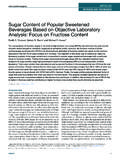Transcription of OTF Report 5-31 Final 1133am - New York City
1 Reversing the Epidemic: The New york city obesity Task force Plan to Prevent and Control obesity May 31, 2012 Introduction In December 2011, Mayor Bloomberg announced a significant victory in the battle against obesity : after years of aggressive efforts to improve nutrition and expand physical activity opportunities for all New Yorkers, New york city experienced a small but statistically significant drop in rates of childhood obesity . Bucking national trends, rates of obesity for NYC. kindergartners through eighth graders decreased percent from 2006 to 2011, with the sharpest declines 10 percent seen among children ages 5 to 6 years old. Mayor Bloomberg makes announcement about New york city child obesity rates with Deputy Mayor Gibbs, Health Commissioner Farley and Schools Chancellor Walcott December 15, 2011. (Photo Credit: Kristen Artz).
2 The data on obesity rates remained bleak for adults, however, and although the decline in rates for children was better news, there are still 40 percent who are overweight or obese, a rate higher than the national average. With evidence that targeted local efforts could have an impact on obesity , Mayor Bloomberg charged Deputy Mayor of Health & Human Services Linda Gibbs and Deputy Mayor of Operations Cas Holloway with significantly strengthening the city 's anti- obesity efforts by convening a multi-agency obesity Task force that would recommend innovative, aggressive solutions to address the obesity challenge in New york city . The obesity Task force was convened in January 2012 and conducted its work over the following several months. Commissioners from eleven city agencies and representatives from the Mayor's Office participated: Linda Gibbs, Deputy Mayor for Health and Human Services, co-chair Caswell Holloway, Deputy Mayor for Operations, co-chair Alan Aviles, President, Health and Hospitals Corporation Adrian Benepe, Commissioner, Department of Parks and Recreation David Bragdon, Director, Office of Long Term Planning and Sustainability Amanda Burden, Commissioner, Department of city Planning David Burney, FAIA, Commissioner, Department of Design and Construction Robert Doar, Commissioner, Human Resources Administration 2 Dr.
3 Thomas Farley, Commissioner, Department of Health and Mental Hygiene Kim Kessler, Food Policy Coordinator Robert LiMandri, Commissioner, Department of Buildings John Rhea, Chairman, NYC Housing Authority Janette Sadik-Khan, Commissioner, Department of Transportation Carter Strickland, Commissioner, Department of Environmental Protection Dennis Walcott, Chancellor, Department of Education Many of the agencies represented on the Task force had not previously had a programmatic focus on public health or obesity , but each was engaged in activities that could improve the health of New Yorkers by improving the food environment; making tap water more accessible;. making public spaces more amenable to physical activity or active transportation; promoting building design that encouraged physical activity; or marshaling resources to identify and best treat children at risk of obesity -related diseases.
4 The Task force identified four key goals to guide its work: Reduce obesity Address disparities between communities Reduce preventable health conditions Create strategies to lower health care spending and lost productivity Three workgroups Food Environment, Physical Activity/Physical Design, and city Practices -- were convened on multiple occasions to generate and vet innovative ideas. In addition, outside stakeholders were consulted informally and in structured roundtables to brainstorm and refine proposals. The following outlines the findings and recommendations of the Task force . **. 3 Finding: obesity is one of our most serious and rapidly growing health problems New york city like the rest of the nation is experiencing an obesity crisis. obesity is among the most rapidly growing serious health problems we face as Americans. In the early 1960s it affected only 13 percent of Americans; by 2007-2008 one-third (34 percent) were It is also a leading cause of preventable death, second only to tobacco, and kills 5,800 New york city residents per year.
5 Being overweight or obese is now the norm in our city : 58 percent of adults . or a total of 3,437,000 people are overweight or obese. And the obesity epidemic strikes hardest in communities already suffering from health and economic disparities, particularly our black, Latino and low-income communities where the rate of overweight and obesity reaches 70. percent in some neighborhoods. Source: NYC Community Health Survey (CHS) 2002-2010, Youth Risk Behavior Survey (YRBS) 2001-2011, NYC FITNESSGRAM 2006-2010. obesity statistics are even more startling among NYC's youth, despite recent progress. Among NYC children ages 6-11 years, percent are obese versus percent Even more are overweight and on a path to obesity once they are adults. The obesity epidemic, if left unchecked, threatens to reverse the enormous progress made in health and life expectancy in recent If obesity rates continue to grow, this generation of children may live shorter lives than their parents.
6 obesity is not a cosmetic problem. Epidemic obesity has led to massive increases in prevalence of Type II diabetes, which can result in blindness, hypertension, and amputations. One in three adult New Yorkers now either has diabetes or a condition known as pre-diabetes. obesity also 4 increases cancer, heart disease, arthritis, depression, asthma and a host of other problems. Severe obesity leads many to immobility and depression. In NYC as of 2007, there were 2,600. hospitalizations for amputations related to diabetes and 1,400 people who end up on dialysis due to In addition, applying national estimates to the NYC population, over 100,000 adults have diabetic retinopathy (eye disease) which if untreated, can lead to Finding: obesity has a disproportionate impact on low-income and minority communities The toll of obesity and resulting diabetes is striking New Yorkers unequally.
7 For example, residents of Bedford Stuyvesant or East New york are four times more likely than a resident of the Upper East Side to die of diabetes. Black New Yorkers are almost three times more likely, and Hispanics twice as likely as whites to die from obesity is also more common among those with mental illness. Finding: obesity is expensive obesity is costly for society, government in general, and NYC specifically. obesity cost the nation $147 billion in 2006 in direct medical costs. Estimates suggest that annual medical expenditures would be between 7-11 percent lower in the absence of obesity . Moreover, a substantial fraction of obesity costs are financed by the public sector via Medicaid and Medicare, which affects both the federal and state budgets. These fractions range from 25 to 64 Worker productivity is also affected: higher rates of death among obese employees costs roughly $44 billion annually nationwide; loss of productivity due to disability among active workers ($39.)
8 Billion); and loss of productivity due to total disability ($65 billion) from overweight and obesity add to that In 2006, in New york State alone, all insurers spent about $ billion to address obesity , including $ billion spent by Medicare and $4 billion by Medicaid. For NYS Medicaid, 11. percent of 2006 expenditures were attributable to This translates to about $ billion in Medicaid expenses for NYC residents for obesity . Finding: obesity is an environmental disease People's genes have not changed over these last decades, but our food and physical activity environments certainly have. Sugary drinks are the leading items associated with excess intake of calories in Sugary drinks, along with other junk food, are now ubiquitous, calorie dense, cheap, served in large portion sizes and aggressively promoted. Sugary drinks and junk food in particular are everywhere, even in places like newspaper stands, pharmacies, gas stations, bookstores and hardware In 2006, 44 companies spent $ billion to promote food and beverages just to children and teens No doubt because of the ubiquity of these products and their promotion in our society, average caloric intake increased by 200-300 calories per day over the past 30 years,xiii and sugary drinks were the single largest contributor to this 5 Physical activity levels are also largely environmentally determined.
9 Physical inactivity also contributes to obesity , high blood pressure and high blood glucose. Countries with infrastructures that facilitate high rates of walking, bicycling and use of public transportation have lower levels of obesity . In fact, NYC has relatively high levels of public transportation and low levels of car use; nonetheless, even here many sources of activity have been designed out of our environment. Fewer people engage in manual work, staircases have been replaced by elevators and escalators, walking by vehicles, and leisure activities are increasingly electronic. Cities were increasingly designed to make room for cars rather than people over the 20th century and that trend is only beginning to be reversed. Reversing obesity Trends in New york city First Generation Efforts For over ten years, NYC has led the nation in its efforts to combat obesity , especially among children.
10 There have been numerous policies, programs, and initiatives implemented that directly and indirectly address the obesity epidemic. Examples include: Calorie Counts: NYC requires chain restaurants that hold NYC Department of Health and Mental Hygiene (DOHMH) permits to post calorie information prominently on menu boards and menus. Meal and Vending Standards: NYC established nutritional standards for every city agency that purchases or serves meals to clients to improve the health of the million students that attend city schools; patients in city hospitals and nursing homes; clients such as those served by homeless shelters, day cares and senior centers; and inmates in city jails. The city also established standards for city vending machines, reducing the availability of high calorie snacks and sugar sweetened beverages in city facilities.
















